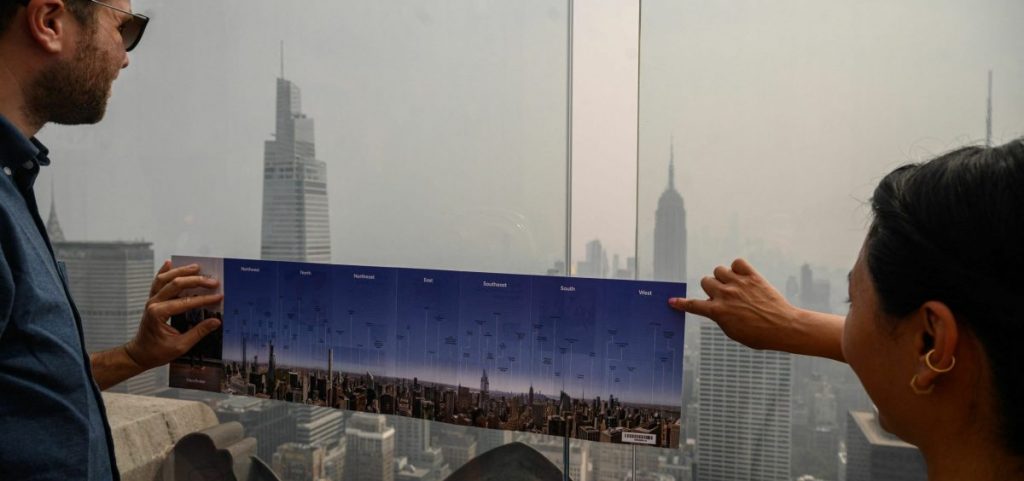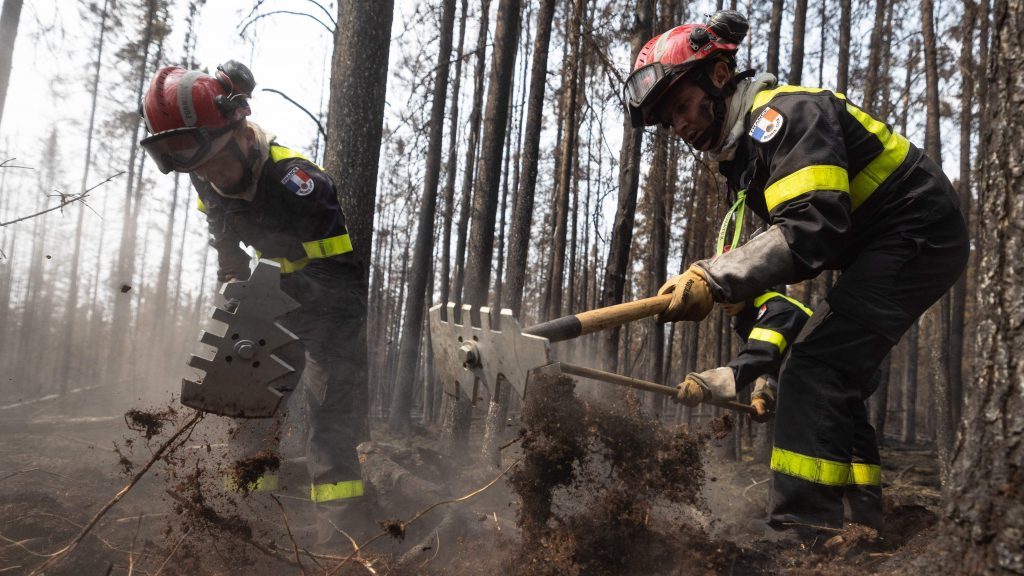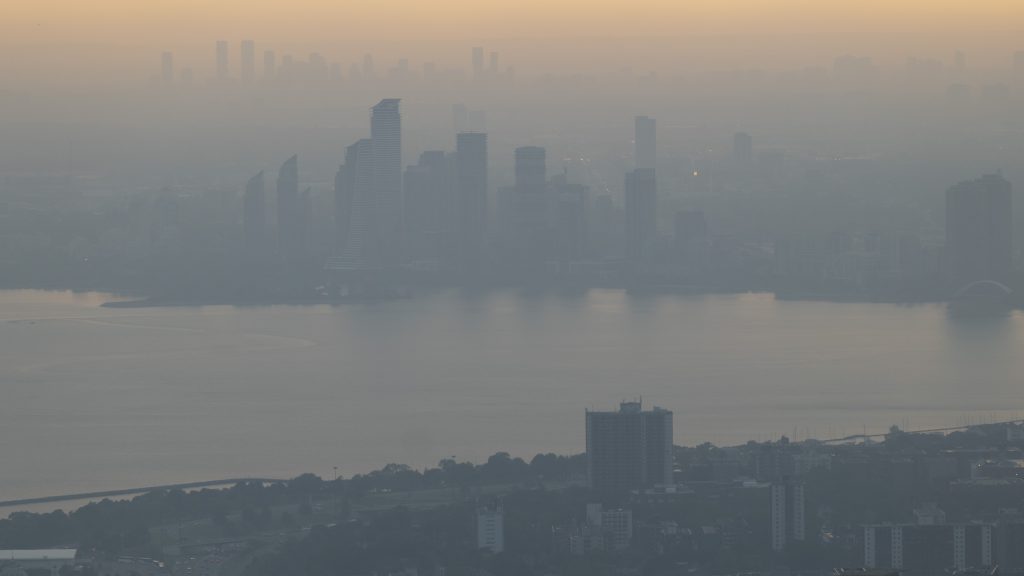News
Why can’t Canada just put the fires out? Here are 5 answers to key questions
By: Bill Chappell I NPR
Posted on:
WASHINGTON, D.C. (NPR) — Smoke from Canada’s wildfires has filled U.S. skies with an unhealthy haze for weeks, becoming a hallmark of the 2023 summer. The smoke raises a number of questions, from why the fires have lasted so long to how smoke keeps ruining air quality for tens millions of people in the U.S.
For many people, the smoke is worse than any other time in recent memory. And there are concerns about whether this might simply be the new normal — if people in the central and eastern U.S. should simply get used to the idea that their summers will be marked by weeks of smoke rather than blue skies and clear sunshine.

- Quinn Barber, a fire science analyst at the Canadian Forest Services in Alberta
- Paige Fischer, an environmental scientist at the University of Michigan
- Daniel Perrakis, a fire research scientist with the Canadian Forest Service in British Columbia
- Sarah Budd, provincial information officer of the British Columbia Wildfire Service
Here is their analysis of the wildfires, edited for length and clarity:
No, Canada can’t simply put out all the fires
“I don’t think the U.S. has enough firefighters for these fires, and Canada most certainly does not,” Perrakis said.
Many of the fires have sprung to life in very remote areas, leaving Canadian provinces to decide which fires can and should be fought.
“Canada is the second-largest country in the world, and almost half of that is forest,” Barber said. “A lot of that forest is remote, untouched wilderness, and it’s very difficult to manage wildfire in those areas where there is no road access or any of the infrastructure needed to support firefighting activity.”

It’s part of a natural cycle for Canada’s boreal forests to burn (more on that below). But the fires can attain dangerous intensity, particularly in current conditions.
“They burn with crown fire behavior,” Perrakis said. Driven by strong winds, he added, “they can spread out 50 meters a minute, 70 meters a minute — 20 or 30 kilometers a day. We’ve seen these multiple times this season.”
In those perilous locations, it’s not worth the risk to send firefighters into the flames’ path.
“What’s important to understand is that the only fires that are allowed to burn are those which do not threaten human lives, communities, or other critical values,” Barber said.
No, the wind won’t simply blow the smoke away
Smoke from the blazes is affecting people in the U.S. for days at a time. Stubborn air circulation patterns have forced tens of millions of people to adjust their daily lives as their communities come under unhealthy air quality alerts.
“I think the most insidious kind of effect is the persistence of these weather patterns,” Perrakis said. “If you get a blocking ridge, a big mass of summer air that dries out all your fuels, in the past that might sit over top of an area for a week. Now we’re seeing these big ridges stick around for much longer. So we’ve got drier fuels, and the smoke and circulation patterns are less dynamic. So things are really sticking around more, and the jet stream is weaker.”
When it reaches the U.S., much of the smoke lingers at low altitudes, triggering orange and red alerts. Massive plumes of smoke have also reached Europe, but in most cases, particulates have stayed high in the atmosphere, easing health concerns there.
Yes, this has happened before
“We have papers from the early 1900s talking about smoky days over American cities, going back to the 1700s. So it’s been one of these things we’ve just kind of had to deal with,” Perrakis said.
Many of Canada’s fires are in the boreal forest, in remote areas north of the zone that contains the country’s biggest cities.
“Those forests are actually adapted to burn, they are evolved to burn, very approximately every 100-200 years,” Barber said. “Even if we could stop all the fires it would be a profound mistake for the ecology of the forest, and would just lead to bigger fires down the road.”
“It’s actually beneficial,” Perrakis said. “It does things like helping with nutrients cycling through the soil and overall landscape resilience. You get this mosaic of different age classes and different forest types, which is what you want.”
“Some people are like, ‘Well, this is climate change. This is terrible. We’ve never seen this before.’ That’s wrong. We’ve seen this plenty of times. But it is [also] climate change, and it is much worse than we’ve seen before,” he added.
As for the smoke, he said, “we haven’t been able to do much about it for hundreds of years. And there’s not that much we can do about it now, which isn’t to say that firefighters aren’t putting in a lot of effort. They are.”
Also yes: Climate change is making it worse
Wildfire seasons are intensified by climate change, according to the National Oceanic and Atmospheric Administration. That applies to Canada, the U.S. and other countries.
“Increasing heat and declining moisture from human-caused climate change are the mechanisms that people should be thinking about,” Fischer said.
Those conditions set the stage for explosive wildfires in areas where trees, shrubs, debris and grasses become fuel for blazes that can quickly blossom from an initial spark into a large wildfire.
“The boreal forest has always burned. Now the corollary to that is, we’re obviously burning more than in the past,” Perrakis said. “Climate change is very significant. We’ve got drought levels that are if not unprecedented, at least in the extreme category, and the fire season’s [arriving] early.”

“Fire suppression capacity increases linearly every year. But what happens with fire behavior is, it’s not a linear process,” Perrakis said. “It’s all about exponential growth and extremes.”
It’s the extreme days that claim the biggest swaths of land — and they’re becoming more common, he added.
And yes, this wildfire season is extremely bad
“This Canadian wildfire season is unprecedented, the most damaging on record in terms of area burnt,” Fischer said.
“We’ve surpassed 10 million hectares (about 25 million acres) of area burned, an area larger than the country of Portugal,” Barber said.
“What’s unusual about this year is that the fires have hit every part of the country, all at the same time,” he said. “It’s rare that the whole country is seeing this kind of fire activity at the same time. Fires in Québec, which are largely responsible for the smoke impacting the U.S., have already burned over 17 times as much forest as is normal, and it’s only halfway through the fire season.”
Canada has been struck by around 4,300 wildfires, year-to-date, according to the Canadian Interagency Forest Fire Centre. British Columbia has been hit particularly hard, as electrical storms torch woodlands reeling from a long drought.
“We saw around 16 days of consecutive convective activity, with more than 50,000 lightning strikes in a seven-day period,” Rudd said from British Columbia. “Those lightning strikes remain the primary driver of new wildfire starts so far this season.”
British Columbia currently has more than 2,000 personnel responding to fires, mainly in its northern half.
“There are also more than 300 international personnel in the province currently supporting response efforts, and the Canadian Armed Forces will be supplementing with additional personnel and aviation resources,” Rudd said.
Those reinforcements will be used to give workers a break, before they return to the fight in Canada’s record-shattering wildfire season.
9(MDU1ODUxOTA3MDE2MDQwNjY2NjEyM2Q3ZA000))

